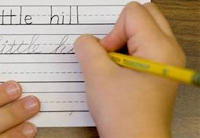Do you have problems with your baby sleeping through the night? Maybe he falls asleep just fine, but then he wakes up in the night and calls out for you. This can be even more of a problem when baby gets big enough to climb out of bed and comes to Mommy and Daddy’s room. If you are dealing with any of these situations, you may want to consider establishing a regular bedtime routine for your little one. Read on to discover how to get baby sleeping through the night.
Have a Routine
Research suggests that establishing a consistent bedtime routine for infants and toddlers helps a baby to fall asleep more quickly, and it even increases the duration of their sleep. Studies have found that toddlers who follow a bedtime routine each evening are less likely to call out to their parents or crawl out of the crib during the night. Interestingly, the mother’s mood also improved significantly once a regular bedtime routine was established. (Probably because she’s getting more sleep!)
Exactly why does this make a difference? Dr. Richard Ferber explains in his wonderful book, Solve Your Child’s Sleep Problems, that babies need to fall asleep on their own, without being rocked or having a parent in the room. This is called a “sleep-onset” association. If baby associates sleep with one of these things, when she wakes in the night, she will need one of these to fall back asleep. Obviously, she will cry or call our for Mommy to come rock her back to sleep, and this cycle will repeat itself every time she wakes in the night.
Stick with it
Starting a bedtime routine may be difficult at first, especially if your child is used to being rocked to sleep. You’ll have to put your infant in the bed and he will have to learn to fall asleep on his own. This will probably mean crying himself to sleep. At first. I’ll admit, I had a very difficult time with this, and my husband had to help; however, after a couple of nights, the crying did not last as long, and it wasn’t long before everyone in the family was sleeping all night. If you are truly committed to getting your baby to sleep through the night, I recommend that you purchase Dr. Ferber’s Book.
A bedtime routine provides a smooth transition from an active day to the calmness of sleep. A basic routine such as putting on pajamas, brushing teeth (when baby is old enough), reading a story, and a goodnight kiss lets a child know what to expect every evening. An added bonus is that children usually love having their parent’s undivided attention! The time together before a child falls asleep is the perfect time to stay connected. So if you haven’t already started this wonderful habit, do it tonight!











